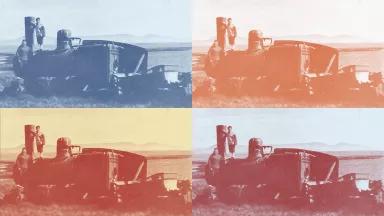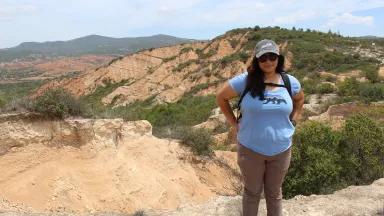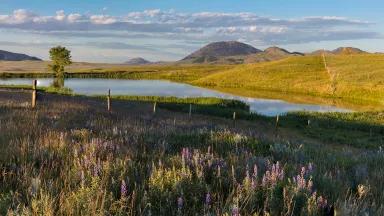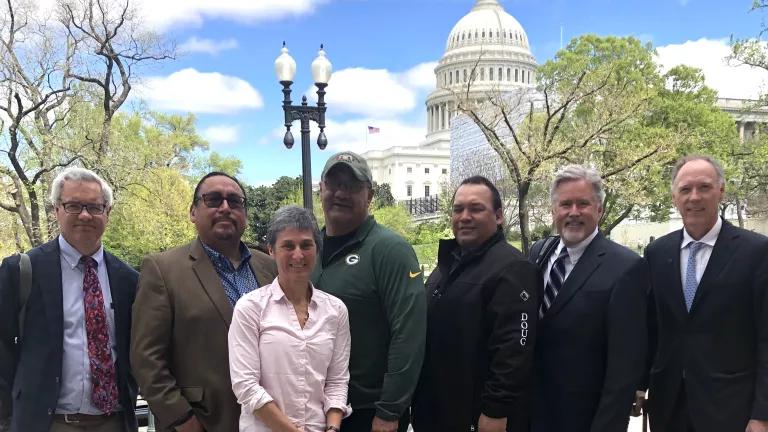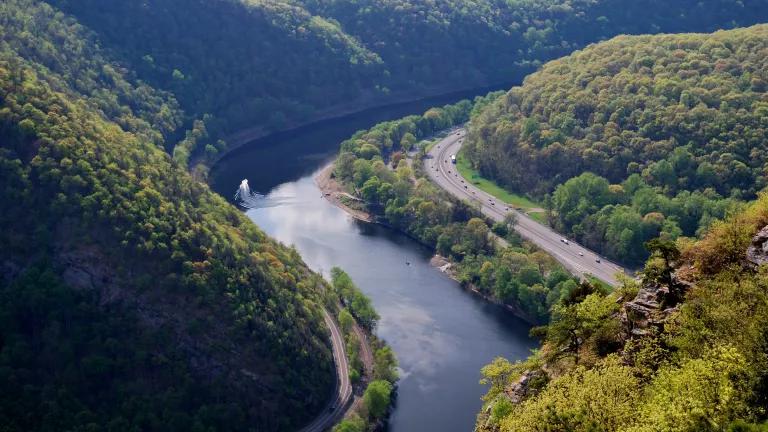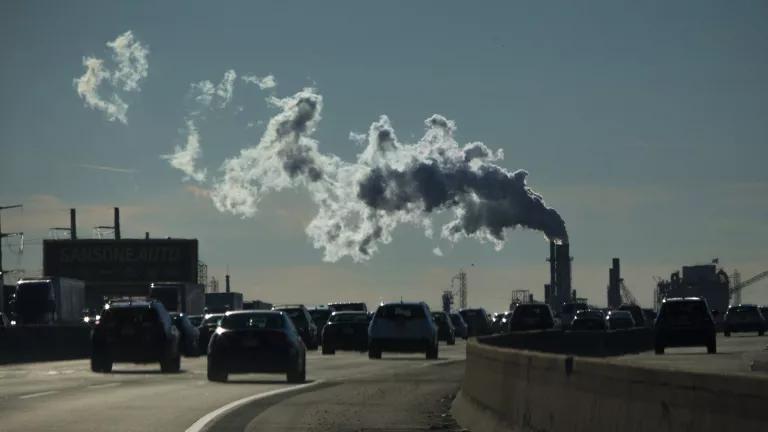Biden Administration Must Redo Its Assessment of Dakota Access Pipeline
The recent Draft Environmental Impact Statement ignores the threats to the Standing Rock Sioux Tribe’s drinking water source and violates tribal treaty rights and sovereignty in a severe environmental injustice.
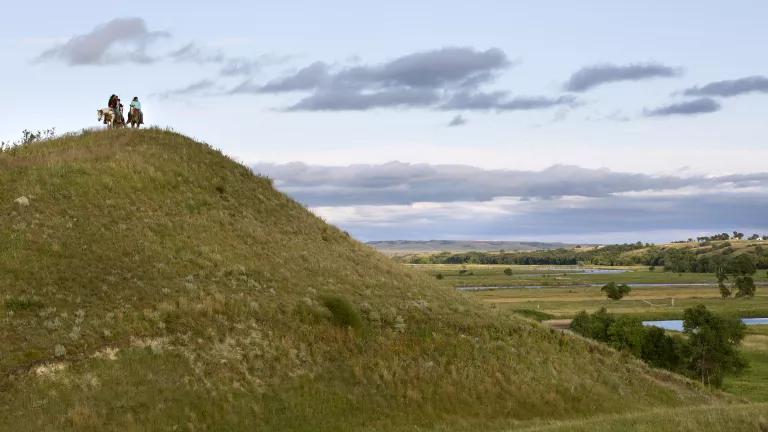
Water protectors look out over the confluence of the Cannonball and Missouri rivers, near the route of the Dakota Access Pipeline in North Dakota.
Terray Sylvester/VWPics via Associated Press
The U.S. Army Corps of Engineers (the Corps) recently issued a Draft Environmental Impact Statement (DEIS) for the Dakota Access Pipeline (DAPL). This typically occurs before a pipeline is built but, in the case of DAPL, the courts decided that it could continue operating while this analysis is conducted. The DEIS is supposed to consider all the impacts of a proposed project in a transparent process that provides meaningful involvement to all stakeholders. Instead, the Corps ignored the massive climate, water, and environmental justice impacts of this pipeline and hid important information about environmental risks that the Standing Rock Sioux Tribe needs to respond to emergencies and protect its vital water sources.
As Chairwoman Janet Alkire of the Standing Rock Sioux Tribe stated: “The pipeline is an imminent threat to the Missouri River, sensitive habitat and sacred burial sites along the riverbank. The oil company’s emergency response plans are inadequate, its safety track record is horrendous, and there’s been a stunning lack of transparency with Standing Rock throughout the environmental review process, including inaccurate characterizations of tribal consultation.”
Filled with dirty oil, DAPL snakes its way across almost 1,200 miles, from the fracking fields of North Dakota to a large oil storage facility in Illinois. It crosses four states, and its approval violates the rights of the Standing Rock Sioux Tribe. DAPL is an ugly symbol of everything that is wrong about the pipeline approval process in the United States. While it is currently operating, it arguably operates illegally because the pipeline lacks a valid federal easement to cross lands adjacent to and beneath Lake Oahe, which is part of the Missouri River and the drinking water source for the Standing Rock Sioux Tribe.
DAPL is a massive project, but the Obama administration initially approved it using processes and permits reserved for minor projects that carry no significant impacts. To start, the government conducted an Environmental Assessment (EA) under the National Environmental Policy Act (NEPA) instead of a more robust Environmental Impact Statement, which should be used when there are potentially significant impacts. It also gave Clean Water Act approval with a nationwide permit that is appropriate only when a project will have minimal cumulative adverse effects on the environment. Any pipeline that is expected to have more than minimal environmental effects—individually or cumulatively—is supposed to instead get an “individual” Clean Water Act permit, as opposed to a nationwide permit.
For these reasons and more, tens of thousands of people—including NRDC—declared their solidarity with the Standing Rock Sioux Tribe in protests at Standing Rock.
In March 2020, a federal court found that the Corps violated NEPA when it approved DAPL in 2016 without addressing significant threats from the potential impacts of oil spills. The court required the Corps to go back to the drawing board to conduct a new environmental review—a full Environmental Impact Statement (EIS). But the courts ultimately allowed the pipeline to continue operating during the seven-year review period.
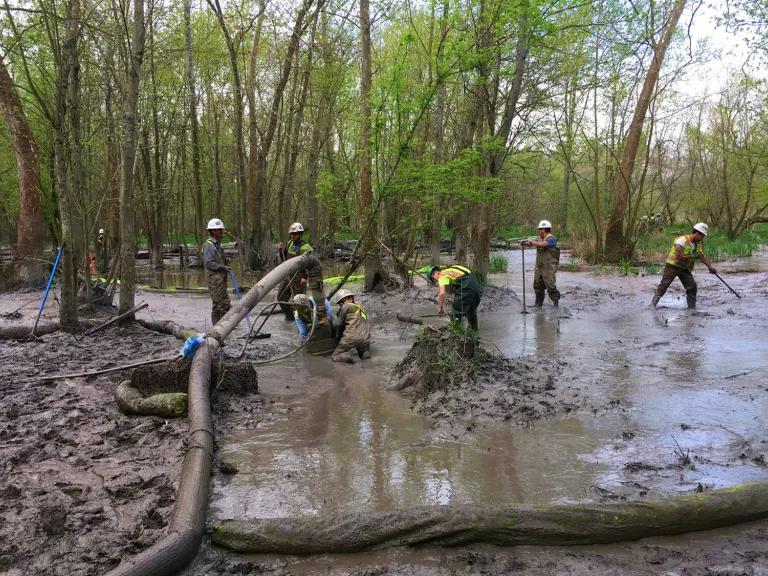
Cleanup workers at the site where Energy Transfer Partners’ Rover pipeline spilled millions of gallons of drilling mud into a wetland along the Tuscarawas River
EPA
Tribes in the area have good reason to be concerned. Even within the notoriously filthy fossil fuel industry, DAPL’s owner, Energy Transfer, stands out for its repeated flagrant disregard for the environment and the rights of communities and landowners. Energy Transfer’s Mariner East 2 pipeline has led to contamination of drinking water sources for dozens of families and farms, “nearly 400 spills,” and dozens of sinkholes; Energy Transfer has been charged by Pennsylvania with 48 environmental crimes to date. Energy Transfer’s Revolution pipeline explosion burned down a home and illegally destroyed at least 23 streams, leading to nine counts of environmental crimes. Energy Transfer is also responsible for the Rover pipeline: One spill alone involved more than 2 million gallons of drilling mud that flowed into a protected wetland and the company had used unapproved toxic chemicals in its drilling fluid.
The DEIS lacks transparency
The Corps has withheld basic information that the Standing Rock Sioux Tribe needs to evaluate the serious health and safety risks of DAPL. It provided some documents with important information redacted, even though the tribe needs that information to properly respond to emergencies as a local first responder. Alkire has written a pointed letter to the Corps detailing some of the most serious transgressions throughout the DAPL review process:
“We have received none of the information requested about emergency plans to address an oil spill, the modeling of oil spill impacts on our reservation, or other documents related to safety of the pipeline…. The refusal to disclose the worst-case discharge and unreacted Facility Response and Geographic Response Plans puts the lives of tribal first responders at risk during an oil spill response…. We have been living with an unsafe pipeline operated by criminals for almost six years. Justice for Standing Rock is long overdue.” A particularly egregious example is the information on modeling of the worst-case oil spill, much of which has been redacted so that the model predictions cannot be independently verified.
The DEIS waves away climate impacts
The Corps completely fumbled its duties on the climate front within this long-awaited court-mandated review. The climate change section suffers from the same structural issue observed throughout the DEIS as a whole—primarily, its inappropriately narrow scope of project impacts.
To start, the agency largely writes off most major indirect climate impacts—principally, downstream combustion—as inevitable, out of its control, and thus irrelevant to the Corps’s decision. The resulting analysis focuses only on temporary construction impacts, which the Corps still doesn't even estimate. These are so minor, relative to DAPL’s overall lifecycle emissions, that by privileging the construction impacts, the Corps leads itself to an utterly backward conclusion: It claims that removing the pipeline would somehow be worse for the climate.
Finally, the agency falls short of even the lowest Trump-era standards for assessing climate impact significance by neglecting to compare the emissions it does estimate to any reference level for interpretation, as is typically the bare minimum. And while the Corps does estimate the social cost of carbon, it only reports annual values, greatly minimizing the true impacts of a project built to operate for many decades. Regardless, even the annual estimates are still massive: hundreds of millions of dollars in damages each year that the operation continues.
Although de-emphasized, the DEIS eventually acknowledges that DAPL could be responsible for moving enough oil to unleash more than 120 million metric tons worth of CO2-equivalent greenhouse gas emissions each year that it operates. The latest U.S. Environmental Protection Agency calculator suggests this is roughly equivalent to the emissions from 27 million passenger vehicles on our roadways, or about 10 percent of the current size of our nationwide fleet. The international community of scientists and policy experts has been beyond clear: We cannot afford to continue running our energy system this way.
Oil spill risks
The reliability and safety sections of the DEIS for DAPL's crossing under Lake Oahe begins with: "The transportation of crude oil by pipeline has inherent risks to the public and environment. The greatest hazards are (1) a major pipeline rupture, resulting in considerable contamination of the environment, and (2) a fire or explosion resulting from a major pipeline rupture." Details provided by the Corps in the document reinforce the significance of potential accidents at DAPL; for example, when hydrocarbons "settle in valleys and low-lying areas, forming pockets of flammable material at or near the ground surface." The DEIS explores several accident scenarios, such as: "After filling the HDD profile, oil would reach a valve site and follow the downward slope into the lake. If repair and remediation attempts were to release crude into Lake Oahe, an immeasurable amount of soil contamination around the pipeline would occur." The horizontal directional drilling (HDD) profile is the channel for the pipeline that was bored directly beneath and across Lake Oahe, even as protests and violent responses to these actions unfolded nearby in 2016.
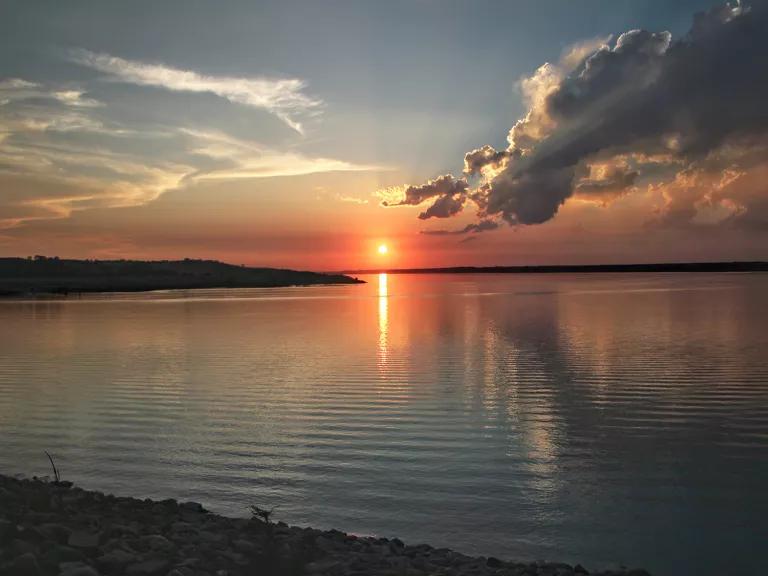
The pipeline is a direct threat to Lake Oahe, the drinking water source for the Standing Rock Sioux Tribe.
Ryan Royer/Dreamstime
But while the Corps presents information on accidents that have already occurred at DAPL over the past several years and at other pipelines owned by its parent company, it nevertheless asserts a vanishingly small accident probability from this data. "In general, this EIS assumes compliance with PHMSA pipeline safety regulations, and that the PHMSA inspection program enforces compliance." PHMSA, which stands for the Pipeline and Hazardous Materials Safety Administration is an agency of the U.S. Department of Transportation. Voluminous but heavily redacted studies are appended to the government document, asserting: "Emergency response efforts would contain oil, remove it from the environment, and therefore reduce the extent of downstream transport and the magnitude of potential effects." Essentially, the Corps argues that, while the consequences of an accident at DAPL could be extreme, the probability of this happening is small, and it could be cleaned up, in any event. NRDC will work to address and challenge technical issues of pipeline reliability and safety raised in the DEIS.
Conclusion
The DEIS ignores the threats to the Standing Rock Sioux Tribe’s drinking water source, where a leak, spill, or other accident could devastate drinking water supplies, as well as the local ecosystem that sustains fish and wildlife in the tribe’s ancestral hunting and fishing grounds. And it violates tribal treaty rights and sovereignty in a severe environmental injustice.
To add insult to injury, the DEIS was developed by a company with well-known ties to the oil and gas industry. The company, ERM, is a member of the American Petroleum Institute, a pro–oil and gas entity that is on the record in its support of DAPL. Therefore, ERM cannot avoid the appearance of bias and cannot be impartial. The Corps’s 2023 DEIS is wholly inadequate in considering the risks to the climate, local communities, clean water, and environmental justice.
Alkire states: “The Corps of Engineers has drained the Oahe reservoir, causing our drinking water system to impose shortages, damaging our irrigation intakes, destroying fish and wildlife habitat, damaging the homes and properties of tribal members, and rendering oil cleanup to be virtually impossible, if there were to be an oil spill today.”
The Corps should go back to the drawing board and conduct a comprehensive, meaningful assessment based on the best science while being transparent with the public about all of the direct, indirect, and cumulative impacts of the pipeline.





